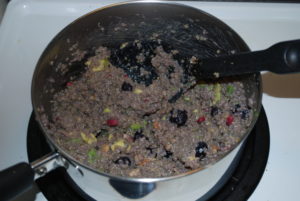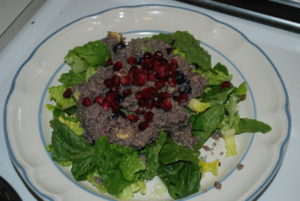This post is a summary of two recent posts:
- Good News/Bad News about Multiple sclerosis Research (7/26/2018)
- Demyelination, continued. (7/28/2018)
Why Care about Demyelination?
We need to care about demyelination as a society because it may be a factor underlying many conditions that have been occurring at increasing rates. The high cost of health care is not just due to the cost of individual medications or the price of hospitalization but is due to the additive cost of increased numbers of individuals needing care. Autism care alone is estimated to likely reach $500 billion by 2025 for care in the U.S. alone, (link), demyelination or disordered myelin formation is thought to be involved. Our food supply may provide calories but it may no longer be supporting health due to imbalance in some nutrients and lack of sufficient amounts of other nutrients – in addition to personal choices for some people leaning toward convenient and tasty foods that provide very few nutrients besides calories.
The other reason to care about demyelination as a society is because the early symptoms can occur for years without clear reasons and may disrupt relationships or the ability to hold a job – personality changes including anxiety and anger, paranoia and a short temper – problems with impulse control and the ability to follow through on planned actions or with communication and the ability to tell the truth instead of substituting other statements that may seem illogical and obviously far from the truth. Problems with impulse control and a tendency toward mood problems may also include an increased risk for suicide or self injury or violence towards others.
The medical research is complex and I haven’t seen all the loose threads together yet, so I will summarize my summary points in a more concise list here and am working on a more organized document elsewhere. This list combines my tips from the previous post with the work of the other summary article (22) — I was also given the link to another summary article which also has tips which I have not incorporated here. It provides an excellent overview about myelin production and function –selfhacked/myelin – what I and the authors of (22) and {selfhacked} have in common is that we all got sick and sought information about regaining our health for ourselves and are sharing the information in case it might help others.
My personal goal is to not become paralyzed (post: ALS & CBD receptors), number of clicks on a website is not something I pay attention to. The loose threads that I’ve woven together in this series of posts which are not included in the excellent selfhacked article are that a) many of the herbs or phytonutrients found helpful for myelin regeneration are Nrf2 promoting which is also important for myelin regeneration and/or reducing oxidative stress that may lead to more degeneration of myelin. b) Foods that are good for promoting Nrf2 often are also good sources of cannabinoids or phospholipids which can be protective. c) And preventing excessive cell death or excess intracellular calcium may decrease the excess production of cytokines by decreasing release of cannabinoids from cell membrane storage and their breakdown into arachidonic acid and eventual transformation into cytokines and other inflammatory chemicals.}:
Strategies to help prevent the breakdown of myelin or help promote regeneration of myelin:
{In the past at different points in time, I personally have experienced and improved with supplementation or diet changes physical and mental symptoms of vitamin B1, B5, B6, folate and B12 deficiencies; iodine, magnesium, calcium and zinc deficiencies; vitamin/hormone D and calcium excess at a different stage of health; cannabinoid/phospholipid deficiency; inadequate protein and general malnutrition due to the zinc deficiency which can greatly reduce appetite at one stage and due to severe bowel mal-absorption more recently; omega 3 fatty acid/omega 6 fatty acid imbalance; and also lack of sleep/melatonin and lack of oxygen/excess toxins in the air; health requires all of the nutrients and adequate oxygen, exercise, sleep and stress coping.}
- Vitamin B1, thiamin deficiency, chronic, severe – Wernicke’s encephalopathy may be more of a risk for severe alcoholics and people with anorexia – severe lack of appetite or the eating disorder anorexia nervosa.
- Vitamin B12 deficiency – may be more of a risk for people with low stomach acidity, due to older age or chronic use of calcium type antacids; or due to genetic reasons limiting production of Intrinsic Factor; or due to a vegan diet without supplementation of vitamin B12 or inclusion of Nutritional yeast flakes in the diet.
- Zinc deficiency (22) or copper excess (link).
- Adequate but not excessive lithium may increase myelin production. (22)
- Adequate but not excessive iron intake is needed for production of myelin.
- Magnesium deficiency or poor intestinal absorption of magnesium, or lack of adequate protein and phospholipids in the diet for the body to be able to store magnesium in the normal manner within the intracellular fluid.
- Inadequate calcium or vitamin D can be a factor but excessive intake of either can also be a factor in cell breakdown and risk of demyelination. If taking vitamin D as a supplement the vitamin D3 form may be most bioactive and taking vitamin K2 with it may help with myelin production (22) and protect against osteoporosis. Green leafy vegetables are good sources of vitamin K.
- Adequate intake of cholesterol is needed as a building block for our own production of vitamin D and other steroid hormones and as a building block for myelin. (22) Pregnenolone is a steroid hormone precursor that may benefit some people when used as a supplement. It and other steroid hormones are involved in signaling increased production of myelin. Testosterone insufficiency may also negatively affect myelin production. (22)
- Excessive intake of free glutamate or aspartate – excitatory amino acids that are commonly used as flavoring or sweetening agents in foods or may occur naturally in fermented foods or alcoholic beverages.
- Adequate protein is needed to support a variety of body functions in addition to supporting magnesium levels. Uridine is a nucleotide base (part of DNA that is a combination of a type of sugar and an amino acid) that is also is involved in energy metabolism, fasting occasionally may increase our own production (more info). Insufficient amounts may negatively affect myelin production and use as a supplement may help some people. (22)
- Insufficient calories to provide the body enough glucose to support mitochondrial health. They can use protein or fats for energy but it shifts the metabolism more towards oxidative stress.
- Occasional fasting and/or a low carbohydrate diet may help promote autophagy due to increased use of ketones for energy (22) but may cause health problems due to excess oxidative stress or an increased burden of nitrogen waste removal for the kidneys when followed long term.
- Lack of antioxidants due to lack of Nrf2 within the body to promote our own production of antioxidants internally; and/or lack of antioxidants within the diet, including vitamin C, (22), would decrease our ability to detoxify the reactive oxidative chemicals produced during normal metabolism or which are produced at increased rates when protein or fats are being used for energy instead of glucose.
- Use of the herb ashwagandha or Gingko biloba (22) may help protect against oxidative stress and protect against demyelination by promoting Nrf2. (ashwagandha & Nrf2) (an overview of Nrf2 metabolism, its potential benefits for conditions such as Multiple sclerosis, and Gingko biloba and pomegranate are mentioned as promoters of Nrf2: nutricology/newsletter, see first article) (other Nrf2 promoting phytonutrients/foods and menu ideas: G10: Nrf2 Promoting Foods.) Flavonoids are one of the groups of phytonutrients that helps promote Nrf2; and also may help protect myelin production. (22) Medicinal mushrooms, including Hericium Erinaceus, Lion’s Mane Mushroom,(22), may also help protect myelin production and prevent breakdown by reducing oxidative stress (link) and promoting Nrf2. (link)
- Having a healthy balance of omega 3 fatty acids and omega 6 fatty acids in the diet helps reduce risk of inflammation/oxidative stress and also helps us build healthy membranes which are necessary to control flow of minerals and other chemicals from the exterior to interior of cells and organelles such as the mitochondria.
- Inadequate iodine for healthy thyroid hormone production, (22); may be a combined problem of excess presence of bromide, fluoride and perchlorate in the diet or environment.
- Lack of oxygen due to poor air quality, or smoking, or health problems causing inadequate breathing function. Emotional or physical stress may also increase the need for oxygen or increase the tendency to hold our breath; Take ten deep breaths and think before you speak is good advice for any emotionally stressful situation because oxygen is needed to think rationally and we tend to hold our breath when we are upset.
- Avoid extreme physical and emotional stress.
- Avoid toxins.
- Get adequate sleep at night, and a brief nap during the day may be beneficial for some people. Melatonin helps promote myelin production and inadequate sleep and having lights on at night can disrupt our production of melatonin. (22)
- Adequate exercise (22) and stretching regularly helps move nutrients throughout the body and remove toxins in the lymphatic fluid for further detoxification and eventual removal from the body.
- Wear a helmet for any activity that may cause head trauma and avoid sports which may cause frequent closed head trauma and especially when helmets are not used (sorry soccer, football, hockey, (link), and boxing fans).
- Adequate phospholipid and other phosphonutrients or cannabinoids may be necessary to include from external sources if genetic differences or other health problems or age interferes with the body’s internal production capability. Dark cocoa products, cardamom powder, pomegranate and pumpkin seeds are a few legal dietary sources.
- Use of ibuprofen and/or ginger (approximately 1/2 teaspoon per day) may help prevent breakdown of our body’s supply of cannabinoids, breakdown of which may then lead to increased breakdown of cells and may then lead to increased degeneration of myelin.
- Lack of any B vitamins or genetic differences in the ability to remethylate folate and vitamin B12 may disrupt the ability of mitochondria to generate usable energy from glucose or proteins and fats, and may reduce production of myelin. (22) Inositol and choline may be particularly important for myelin production. They are considered to be in the B vitamin group but was discovered more recently than the numbered series of B vitamins. (22)
- Low Level Laser Therapy – I am not familiar with this, see #10: (22), but I have read elsewhere that certain types of light can stimulate activity levels. (Haier)
- Practice, practice, practice – new things. (22) Myelin is produced in response to learning [45] so remaining mentally stimulated with new experiences and learning new topics or techniques keeps signalling the body to produce myelin.
- Brain-derived Neurotrophic Factor, (BDNF), the brain’s growth factor, may help increase production of myelin by increasing production of brain cells, which include oligodendrocytes. (22) Ways to promote BDNF (link, from within 22) fortunately overlap with the strategies for protecting against demyelination already mentioned above or included in the list of Nrf2 promoting foods.
- Reducing exposure to electromagnetic fields (EMF) – energy leakage from laptops, smartphones, WiFi, televisions, and other strong sources of electicity may help protect against myelin degeneration. (22)
References and more details for some of this information were included in the last two posts:
- Good News/Bad News about Multiple sclerosis Research (7/26/2018)
- Demyelination, continued. (7/28/2018)
/Disclosure: This information is provided for educational purposes within the guidelines of fair use. While I am a Registered Dietitian this information is not intended to provide individual health guidance. Please see a health professional for individual health care purposes./


